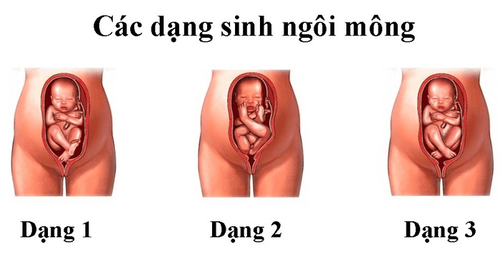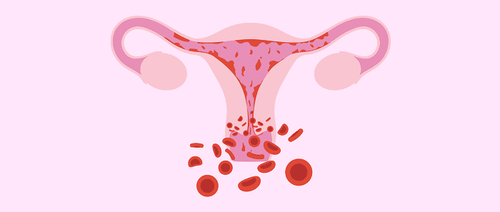This is an automatically translated article.
The article is professionally consulted by Master, Doctor Phung Thi Ly - Department of Obstetrics and Gynecology - Vinmec Times City International Hospital.Any abnormal signs of amniotic fluid make pregnant women very worried, especially polyhydramnios or amniotic fluid. So, can a pregnant woman with polyhydramnios give birth normally or must a caesarean section not affect the fetus? To answer this question, please refer to information from the obstetricians of Vinmec hospital.
1. What is polyhydramnios?
Polyhydramnios (also known as amniotic fluid disorder) is a condition in which too much amniotic fluid is abnormally formed, enclosing the fetus in the uterus, which can cause dangerous complications for both mother and baby. include: preterm birth, placental abruption, and fetal abnormalities.Normally after conception, amniotic fluid will form about 12 days later. Amniotic fluid's job is to support the fetus in the development of limbs, lungs and digestive system. Amniotic fluid also helps to wrap and keep the baby's body temperature stable during pregnancy.
The average amount of amniotic fluid is usually in the range of 800-1000ml. When this volume exceeds two liters this condition needs to be considered. Diagnosis of polyhydramnios is mainly based on ultrasound measurement of Amniotic Fluid Index (AFI) in case the deepest amniotic cavity is ≥ 8 cm, or Amniotic Index ≥ 25 cm.
Most polyhydramnios is not a serious problem. However, most pregnant women in this situation are very worried and wonder if polyhydramnios can give birth normally. If a pregnant woman is diagnosed with polyhydramnios, the doctor will carefully monitor the pregnancy to promptly prevent complications. Treatment depends on the severity of the disease.
2. How does polyhydramnios affect the fetus?
Usually, the degree of impact of polyhydramnios on the fetus is higher when polyhydramnios occurs earlier in pregnancy. Specifically, the following risks can occur to both mother and fetus:When the volume of amniotic fluid in the uterus is too high, the amniotic membrane becomes stretched like a balloon, increasing the risk of premature rupture of membranes, forcing the mother to give birth prematurely; breech delivery or situations where the fetus is in an unfavorable position;

3. Can polyhydramnios have a normal birth?
Most mothers who have to fall into the situation of polyhydramnios are anxious and worried about whether polyhydramnios can give birth normally or not. The answer to this depends on how severe or mild polyhydramnios is for each mother. Polyhydramnios is actually not a very serious phenomenon, but with the increasing amount of amniotic fluid, the possibility of dangerous complications for both mother and fetus during the birth will increase.
Risk of sudden rupture of membranes while there are no signs of labor, leading to the possibility that the mother unplanned preterm birth is very high; Both the size and weight of the fetus are likely to be larger than normal; The fetus may be stillborn; Early rupture of membranes in the state of breech pregnancy or the mother's body is not yet suitable for delivery; Premature placental abruption and umbilical cord prolapse, seriously affecting the health of mother and fetus.
4. So should polyhydramnios be vaginal birth or caesarean section?
According to doctors at Vinmec hospital, the choice of vaginal delivery or cesarean section for polyhydramnios should be based on each cause, specific circumstances and conditions for each pregnant mother. Accordingly, in the case of finding that there are many risks in the mother's birth, the doctor will most likely decide to have a cesarean section to avoid the risk of heavy blood loss and postpartum haemorrhage in mothers with polyhydramnios. These are dangerous complications that can occur and easily lead to complications for the mother in the future.5. What should pregnant women with polyhydramnios do?

A reasonable, scientific and nutritious diet, supplementing with 2.5 liters of water per day and limiting the use of water. Salt will help the mother improve the condition of excess amniotic fluid. Perform regular antenatal check-ups as scheduled and perform screening tests as prescribed by the doctor to check the baby's morphology as well as the amniotic fluid to detect early cases of polyhydramnios to find the cause and have appropriate treatment and monitoring directions for each pregnant woman. Pay attention to monitor the body's abnormal manifestations and immediately notify the doctor, especially when the mother realizes that she is leaking amniotic fluid, the abdomen becomes tight, and it is difficult to breathe for no reason. In summary, the normal delivery of polyhydramnios does not entirely depend on the mother's convalescence during fetal development and the expert's judgment on whether the mother's polyhydramnios is severe or not. light. Therefore, mothers need to adhere to the above principles to ensure that their pregnancy goes smoothly during this important sprint.
Customers can refer to the package maternity care program at Vinmec International General Hospital with a route of scientific examination for pregnant mothers before - during - after birth with experienced doctors in the field of pregnancy. obstetrics and gynecology, ensuring close monitoring helps women have a healthy pregnancy and safe labor.
If you have a need for medical examination at Vimec Health System nationwide, please make an appointment on the website to be served.
Please dial HOTLINE for more information or register for an appointment HERE. Download MyVinmec app to make appointments faster and to manage your bookings easily.














